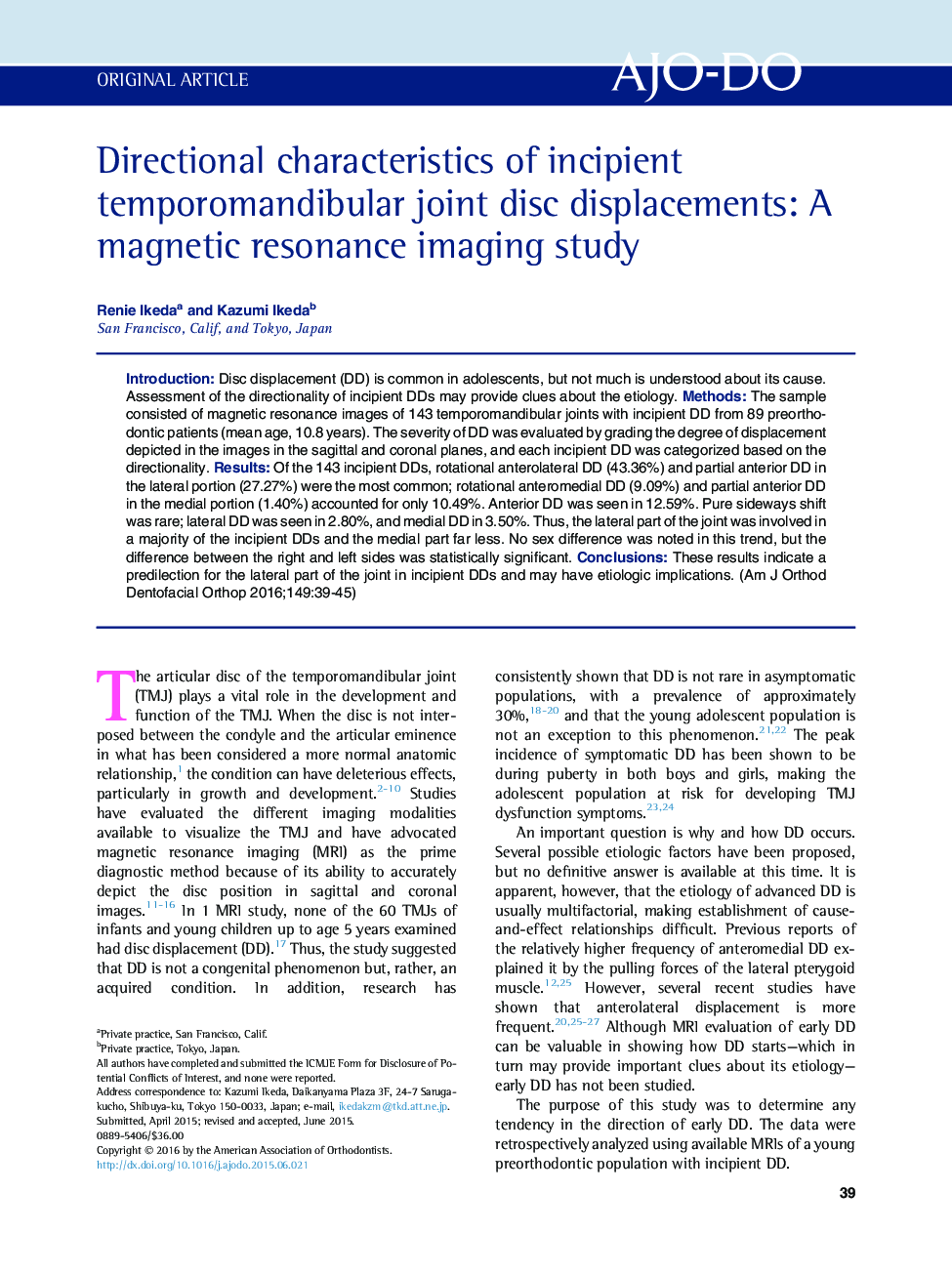| Article ID | Journal | Published Year | Pages | File Type |
|---|---|---|---|---|
| 3115756 | American Journal of Orthodontics and Dentofacial Orthopedics | 2016 | 7 Pages |
•Directional characteristics of incipient disc displacements were analyzed with MRI.•Most incipient disc displacements involved the lateral aspect of the TMJ.•No posterior disc displacement was observed in this sample.•The difference between the right and left joints was statistically significant.•Higher frequency of displacements with a lateral component was seen in left TMJs.
IntroductionDisc displacement (DD) is common in adolescents, but not much is understood about its cause. Assessment of the directionality of incipient DDs may provide clues about the etiology.MethodsThe sample consisted of magnetic resonance images of 143 temporomandibular joints with incipient DD from 89 preorthodontic patients (mean age, 10.8 years). The severity of DD was evaluated by grading the degree of displacement depicted in the images in the sagittal and coronal planes, and each incipient DD was categorized based on the directionality.ResultsOf the 143 incipient DDs, rotational anterolateral DD (43.36%) and partial anterior DD in the lateral portion (27.27%) were the most common; rotational anteromedial DD (9.09%) and partial anterior DD in the medial portion (1.40%) accounted for only 10.49%. Anterior DD was seen in 12.59%. Pure sideways shift was rare; lateral DD was seen in 2.80%, and medial DD in 3.50%. Thus, the lateral part of the joint was involved in a majority of the incipient DDs and the medial part far less. No sex difference was noted in this trend, but the difference between the right and left sides was statistically significant.ConclusionsThese results indicate a predilection for the lateral part of the joint in incipient DDs and may have etiologic implications.
